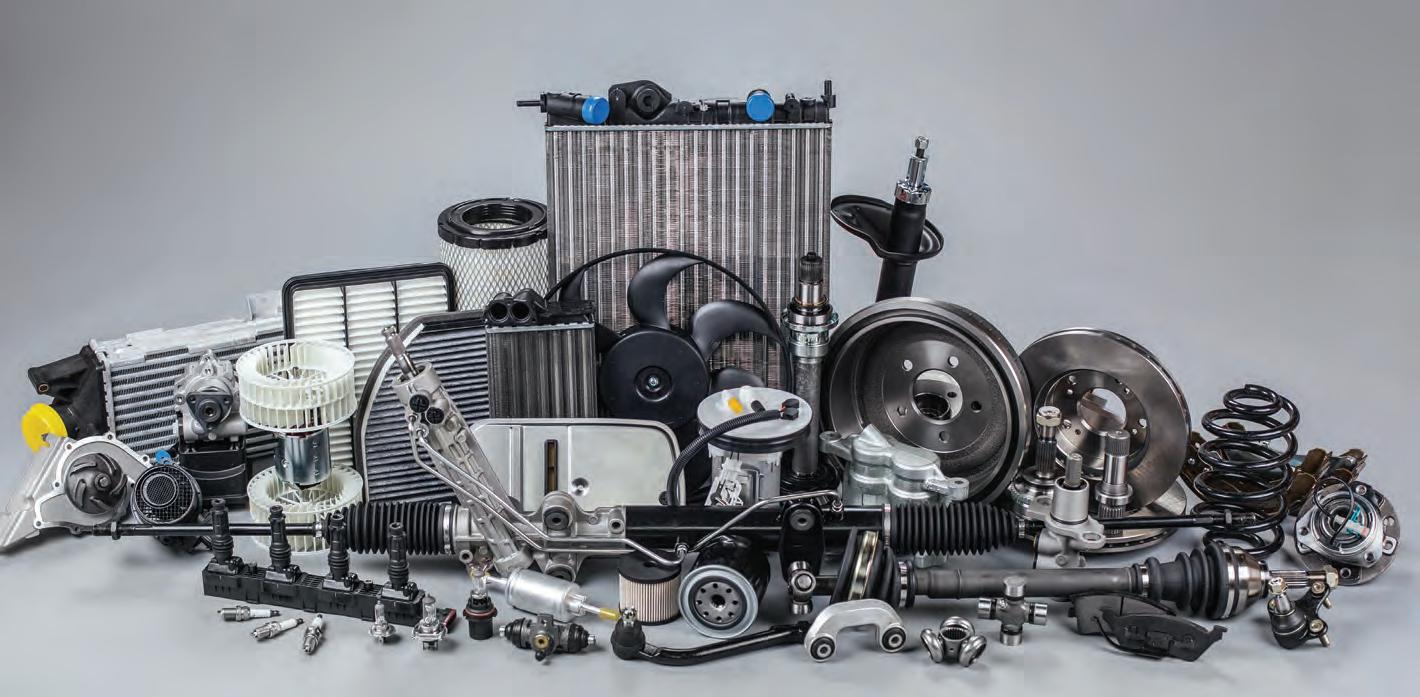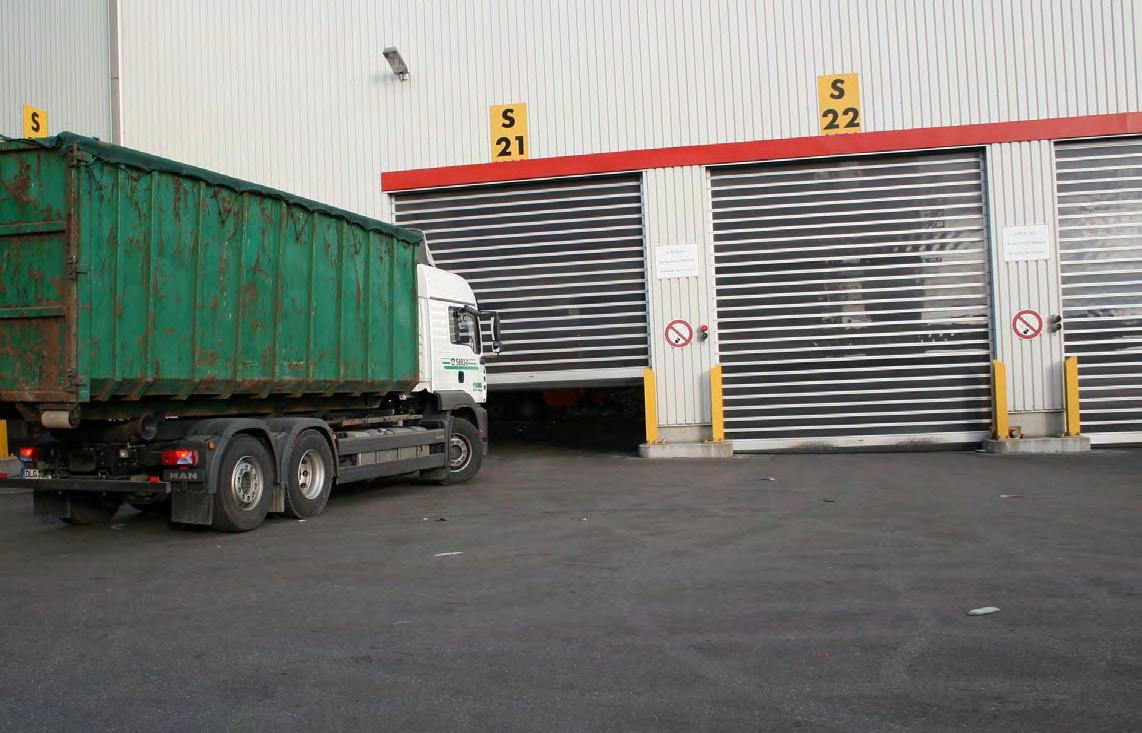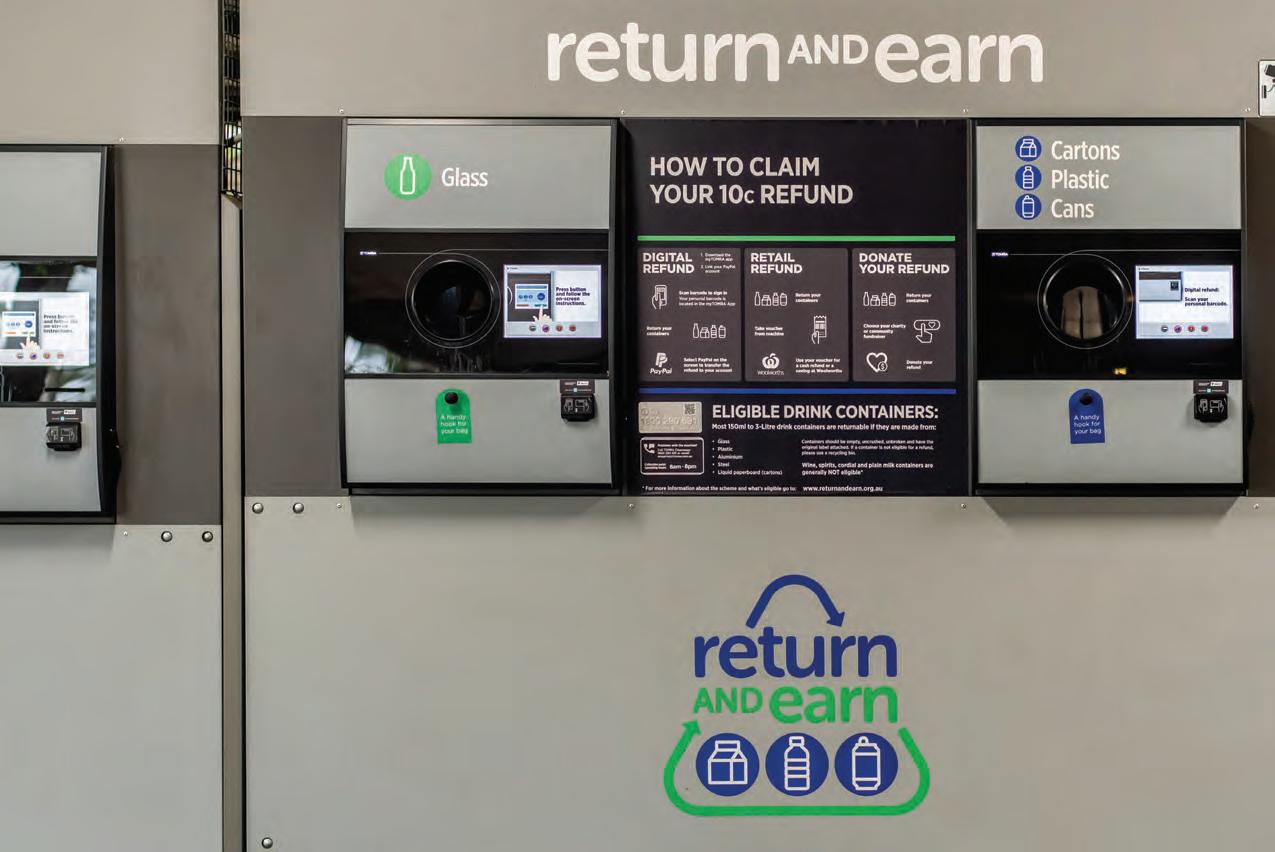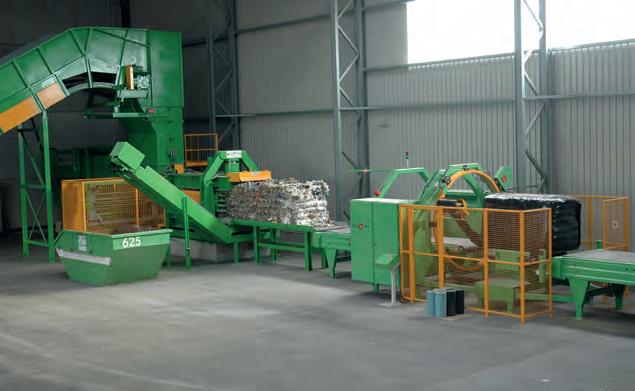
17 minute read
Automotive recycling
The shifting paradigm of automotive recycling – an Australian perspective
By Sarfraz Ali Kyani
WITH more than 1.4 billion cars worldwide, car ownership over the past two decades has been increasing at a rate higher than the rate of population growth itself. A scrappage rate of 7 per cent a year proposes that 98 million end-of-life vehicles (ELVs) are currently present in the world.
Given its environmental impact, the waste produced by these ELVs is a global concern for governments, environmental protection agencies, and the public.
In the mid-1990s, and under growing strain from national governments, the global automobile industry made voluntary agreements to enhance the recovery and recycling rates and take responsibility for ELV treatment. As part of the legislation, most countries made it mandatory to reuse, recover, and recycle ELVs.
The European Union (EU) took the lead and introduced a directive on ELVs in 2000. As per the EU-Directive 2000/53/EC on ELV (2000), member countries were told to create waste collection systems for ELVs.
They had to strengthen the reuse of suitable vehicle components and prioritise recycling where environmentally viable.
It also mandated that EU countries had to meet the targets of reuse and recovery and reuse and recycling, at least 95 per cent and 85 per cent respectively, by 2015 onwards. Along with setting targets, the directive encouraged vehicle manufacturers to: 1) minimise the use of hazardous substances in vehicles; 2) design vehicles that facilitate dismantling and recycling; and 3) increase the usage of recycled materials in manufacturing new vehicles (The Council of The
European Union, 2000).
In Japan, the recycling of an ELV is considered a priority area. To create a recycling system, the Ministry of Environment passed the ‘ELV Recycling Law’ in 2002. Under the law, recycling automotive shredder residue (ASR) targets were set at 70 per cent by 2015, matching an overall ELV recycling rate of 95 per cent by 2015 onwards.
Similar directives were passed in China where the ELV recycling regulation enforced in 2001; and Korea where the Act for Resource Recycling for Electrical Equipment and Vehicles was put in place in 2008.
It can be observed that a few vital external factors enabled these countries to recycle their ELVs efficiently and create a sustainable automotive industry. These factors were: 1) prioritising environmental sustainability, based on sustainable development goals
SDGs (UN, 2015); 2) strict regulatory framework, such as the EU’s ELV Directive (2000); and 3) technical capabilities of autorecyclers to innovate and explore efficient recycling mechanisms.
By contrast, the ELV management system in Australia is driven by economic market contemplations due to a lack of ELV regulation and inadequate recycling technology.
According to the Australian Bureau of Statistics (2021), there are 20.1 million registered motor vehicles in the country as of 31 January 2021. The ELV management is determined by economic mechanisms, with no prevailing national regulation linked to ELV disposal.
Auto-recyclers collect ELVs for the worth of metal scrap, and they are liable for removing ELV waste at their own cost. The volume of waste ELVs bring about is substantial and costly.
Even with the lack of ELV legislation in the country, the discarding of a few toxic substances is carried out under diverse and broadly defined voluntary product stewardship schemes bound by the Recycling and Waste Reduction Act (2020).
The stewardship schemes include parties voluntarily pursuing accreditation for their product stewardship plan from the government. This includes Tyre Stewardship Australia (TSA Australia, 2016), the Product Stewardship (Oil) Act (2000), and the Australian Battery Recycling Initiative (2021). Hence, recycling some auto parts,
Approximately 28 per cent of end-of-life vehicle parts end up in landfills.
like tyres, batteries, and fluids, is taken under these organisations.
One of the key concerns arising from the voluntary-based waste policy is the competition among authorised and unauthorised recycling operators.
The unauthorised and illegitimate recycling operators do not observe the environmental standards and offer competitive prices in the ELV collection because of their low recycling costs. This has subsequently led to the discarding of a significant amount of ELV waste to landfills without appropriate treatment.
According to recent reports, about 28 per cent of the ELV as ASR goes to landfills. The car plastics going into Australian landfills each year weighs approximately 140,000 tonnes. This is about 6 per cent of the total plastic waste (2.5 million tonnes) generated in the country.
In late 2019, MTA Queensland partnered with the Australian Research Council (ARC) on a fiveyear project, titled the ARC Training Centre for Multiscale 3D Imaging, Modelling and Manufacturing (M3D). I am the lead researcher from the Queensland University of Technology (QUT) working on the subproject ‘recycling of automotive parts for additive manufacturing’. I am working closely with the government, MTAQ and other key decision-makers to shape policy development for the automotive industry.
More importantly, the research project investigates ways to recycle auto-plastics, convert them into base materials for 3D printing, and further explore the second-hand plastic market in Australia. And in doing so, devise a sustainable business strategy for the Australian autorecycling industry.

Sarfraz Kyani is working with decision-makers to find better outcomes for car scrap.
Sarfraz Ali Kyani is a researcher at the Queensland University of Technology. iw
SPECIALIST DOORS

for the WASTE INDUSTRY
Noise Dust Wind Separation Odour Vermin Security
DMF International Pty Ltd is a fully Australian family owned business, with nearly 55 years of supplying specialist door solutions. We manufacture, import and install a range of high speed and large PVC fold up doors to assist in the environmental controls of the door openings. DMF are proud to be an Australian partner for German brand EFAFLEX Gmbh, who manufacture premium high speed doors for the global market. These doors are designed to operate many cycles a day, with speeds from 0.5-1.5m/sec, and tolerate very dusty applications. For highly corrosive environments, we can even supply doors with stainless steel structures. These door types have been installed for waste processing, waste to energy, recycle and FOGO plants, and are suited to many other industries requiring climate control of large doorways. Call us today!
Free call 1800 281170 www.dmf.com.au sales@dmf.com.au
From linear to circular – the case for expanding Container Deposit Schemes
By Anne Prince
KERBSIDE recycling programs commenced in the late 1980s and early 1990s in response to increasing environmental awareness under the mantra ‘Think Globally, Act Locally’. The community was looking for a practical hands-on solution to stem the tide of a proliferation of packaging and wasted resources.
From my recollection, Victoria was the first to introduce a dedicated container with a bag-based program. New South Wales followed with Recycle Sydney and Recycle NSW driving the revolution. By 1993, 89 per cent of all Sydney households had a black crate-based recycling service. As the volume and range of materials continued to grow, the use of wheelie bins and automated vehicles led councils to embed recycling services into general waste collection contracts. An Australian Standard, AS 4123, was developed to standardise bin colours but many councils continued to go their own way, with choices based on corporate colour schemes or personal preference.
In the absence of a Recycle NSW-type structure, programs were developed and implemented in an ad hoc and inconsistent manner, often driven by the desire of elected representatives to respond to constituent lobbying. Today, the range of products, especially plastics has expanded, bin colours vary across Australia’s 537 individual councils. Communication and education strategies don’t always cut through at a council level, and to say there is confusion about what goes in the bin is an understatement.
Spare a thought for the 100 plus material recovery facilities (MRFs) nationally, processing the contents of recycling bins with ever increasing levels of contamination at a time when quality has never been more important with export options closing.
There was recognition of these issues at the national meeting of the state environment ministers in April 2021, with ministers agreeing to: “work collaboratively to improve the harmonisation of municipal waste collection, taking the first step within each state through the implementation of standards within each jurisdiction for kerbside recycling, and a national implementation roadmap that considers costs and benefits”.
A decade ago, NSW linked council performance payments, including the standardisation of bin colours. However, they never followed through with a mass media campaign leaving communication to councils – it was a missed opportunity.
Now, the Victorian Government is set to invest more than $300 million to transform its recycling sector. A new four-bin recycling system for recyclables, glass, FOGO and general waste supported by a statewide education program will help transition to the new system. The latter is long

Victorian waste audits found each household generates a total of 18.6 eligible containers per fortnight.
overdue, but I’m not convinced a new glass bin is what we need with a container deposit scheme (CDS) around the next corner.
We know that glass is a challenge in kerbside collections, producing a low-quality, contaminated product. It is also one of the most popular containers redeemed in a CDS, producing a quality feedstock for infinite glass recycling and remanufacture. Our data from NSW kerbside pre- and post-CDS introduction reveals an average reduction of 60 per cent of eligible containers are diverted from kerbside recycling bins, by count. As glass weighs up to 10 times more than other containers, taking this out of kerbside bins impacts fortnightly recycling bin weights. To have a separate kerbside bin for glass only, and a CDS system in place, seems like overkill.
A regional Victorian waste audit for a group of councils in 2021 found each household per fortnight generates a total of 18.6 eligible recycling containers of which 55 per cent of all glass containers were eligible under the proposed CDS. On average, 3.3kg of glass containers are generated per household per fortnight. If the introduction of a CDS reduced the eligible glass containers by 50 per cent (in regional NSW the reduction of eligible glass containers was measured at 71 per cent), a monthly 120-litre glass bin would weigh 4.8kgs and the bin volume consumed would be about 24 litres, or 20 per cent. It could take five months (20 weeks) to fill the bin by volume with a weight of 24kgs. Based on this data, and the NSW lived experience of CDS, the introduction of a fourth bin is premature. There will still be glass in the kerbside recycling bins but it is questionable as to whether it will justify a dedicated glass bin.
At the same Environment Ministers meeting in April, there was agreement in relation to CDS to “harmonise containers (size and products) across jurisdictions, refund amounts, standards for labelling, and community education by the end of 2025, ensuring consistent recycling collection strategies across all states”.
The Northern Territory recently conducted a review of its CDS program, which recommended expanding the project range to include alcohol, spirit and cordial packaged in glass. The South Australian (SA) government has released a discussion paper reviewing Australia’s oldest container scheme. Among many things considered is the product range. Its analysis found that used beverage containers account for 22 per cent of kerbside recycling bins. Of this amount, glass represents 89 per cent with three products, wine (43 per cent), spirits (7 per cent) and other non-alcoholic drinks (15 per cent) representing 65 per cent.
A CDS is an example of extended producer responsibility with the beverage industry paying for the return, whereas kerbside collection is paid for by councils and in turn ratepayers. If all glass wine, spirit and cordial containers were deemed eligible, the SA modelling shows a saving of $58 million per annum to 68 councils representing 745,000 households. The Australian Packaging Covenant Organisation (APCO) and CSIRO reports cited in the SA discussion paper support this pathway to CDS.
We know based on the SA report that 93 per cent of all glass cullet used in bottle making is sourced from the CDS scheme as it’s clean. Just 7 per cent comes from kerbside recycling bins. Only 11 per cent of all glass in kerbside recycling bins is processed into bottles with the remaining 85 per cent used in civil construction and 4 per cent lost to landfill.
If we are now moving from linear to circular economy, why are we not considering putting all glass through CDS, irrespective of product, as this is not just a litter issue, it’s about greater resource recovery and product quality for reuse?
Whatever the outcome of these considerations, it is my hope that once we land on an agreed national approach, with an agreed timeframe to transition to compliance, then the Commonwealth and all state governments will step up to fund a mass media campaign to Recycle Right. This is 30 years overdue.
Anne Prince is the principal of A. Prince Consulting. iw

CIRCULARITY All bins designed using circularity principles & recycled materials
MODULARITY Modular design for interchangeability, improved cleaning & circular processes
Equipped with quick change systems & optional mobility wheels
CUSTOMISABLE Interchangeable modules for customisable waste streams

Split waste removal systems can be configured with 2, 3, 4 or 5 waste compartments in various sizes Paxa waste removal systems: Small (23L) or large (65L) with bamboo or recycled plastics lid Waste removal streams: general waste, recycling, organic waste, cups & paper
ERGONOMIC
OPTIONS

Integra Systems embraces Circular Economy principles and practices to help rebuild a greener planet
CIRCULAR WASTE REMOVAL SYSTEMS
PAXA
GENERAL ORGANIC CUPS
SPLIT
Email: integratransform@integrasystems.com.au Phone: (03) 9359 3133 Visit: www.integratransform.com.au
Creating a real carbon pump
Diverting organics from landfill can stop the flow of CO2-e into the atmosphere.
By Mike Ritchie
THE COP26 climate change summit was recently held in Glasgow. The reason we needed the summit was that we have been efficient at pumping carbon dioxide into the atmosphere but singularly useless at getting it back out again. Australia releases more than 580MT per year of carbon dioxide equivalent into the global atmosphere. Up to 2.7 per cent of these greenhouse gas emissions are contributed by the waste sector.
Guess how much we pull out of the atmosphere per year? Zero. Yes, 0 tonnes.
Australia’s waste sector can play a key role towards reaching net zero. With maximum diversion to resource recovery, recycling and energy from waste (for the non-recyclable stream), 50MT/year of CO2-e can be abated through four simple and relatively cheap measures: 1. Divert organics from landfill: 18MT
CO2-e can be abated through diverting organics away from landfill including paper, cardboard, garden organics, food waste, wood and timber. 2. Capture landfill gas: 11MT CO2-e can be avoided through capturing landfill gas, which can be used for electricity generation or simply flared. 3. Increased recycling: 17MT CO2-e can be avoided through recycling of high embodied energy materials like metals, paper, cardboard, glass, and plastics (i.e. avoiding the emissions associated with the extraction and processing of raw resources). 4. Energy from Waste: 4MT CO2-e can be abated through the production of energy from solid waste-derived fuels.
All of the focus of emissions policy is getting to net zero emissions by 2050. That is, reducing the 580MT of Australian emissions (and all global emissions) to net zero. Hence the push to run all energy consuming activities from electricity or hydrogen, and to produce these via renewable wind and solar.
Put simply, put everything we do on the electricity grid or on the hydrogen gas grid (not yet in place) and then supply those two energy systems via renewable sources such as wind and solar. What a task.
But the key point is that even net zero by 2050 is not enough to prevent global warming.
Globally, we have already put enough CO2 into the atmosphere to raise temperatures by 1.5˚C. In the time it takes us to get to net zero (and let’s be positive and assume that is 2050) we will have put another 660 GT into the global atmosphere. The IPCC estimates that emissions to 2050 will drive temperatures further to 1.7˚C.
However, the task is even bigger than getting to net zero.
To get temperature back down to pre-industrial levels we need to go even harder. We need to have negative emissions. That is, we need to suck CO2 out of the atmosphere.
The bad news is that no one has yet built a machine to efficiently suck gaseous CO2 from the atmosphere. There are some pilot plants trying but they are just that, pilots. Small-

“Globally, we have already put enough CO2 into the atmosphere to raise temperatures by 1.5˚C. In the time it takes us to get to net zero (and let’s be positive and assume that is 2050), we will have put another 660 GT into the global atmosphere. The IPCC estimates that emissions to 2050 will drive temperatures further to 1.7˚C. However, the task is even bigger than getting to net zero.”
scale, expensive and preliminary. I hope they work.
The coal and gas industry talk about capturing the CO2 emissions from their power stations and pumping those deep underground. But that just makes those power plants emission free (making the heroic assumption that they work). It is not negative emissions.
To get to negative we need to either invent a new technology, or better use the one technology we know works.
What do you think that is? What is the one process that takes gaseous CO2 out of the atmosphere and solidifies it in a form we can bury?
Photosynthesis. Yes,the thing plants have been doing for billions of years. The reason we have a liveable planet in the first place is because plants have been doing this since they evolved more than 3 billion years ago.
But to harness the power of plants, we cannot just grow more of them. There is not enough arable land available on Earth (without people on it) to grow enough trees to sequester enough CO2. The maths doesn’t add up.
When trees grow they sequester carbon and store it in the lignocellulosic material (wood, trunks, branches, stems, leaves). But once a plant matures they are stable and release as much CO2 as they sequester each day. When the trees die, they decompose aerobically and release the stored carbon as CO2.
Sequestration, therefore, is the sum of the increases in biomass. Put another way, if we convert a grassland into forest, we get the one-off sequestration of the biomass or the additional plant matter. But that is it.
We could try to seed the oceans to grow more phytoplankton but when they die they will just release it back to the atmosphere, except for that proportion that falls into a deep ocean trench without oxygen. That will sequester a proportion, but the science is still preliminary.
One answer which I keep banging on about is growing trees (to sequester the carbon in lignocellulosic material) and pyrolyse the wood (and the garden organics from households, agricultural waste and commercial/council operations) to generate biochar. That biochar can then be crushed (value added with NPK) and ploughed into soil as a fertiliser.
Given Australia has the oldest and most degraded soils on the planet, this is something we should be doing anyway.
The biochar is sequestered in the soil for at least 20,000 years that we know of.
But the key benefit of linking photosynthesis with pyrolysis is that it can be a continuous process. You can keep growing trees on the same parcel of land, year after year, cutting them down and pyrolysing the wood into char and using that as a fertiliser.
It is a big, beautiful carbon pump. Sucking CO2 out of the atmosphere and converting it to fertiliser.
What about the energy to do this, I hear you (rightly) ask?
Well pyrolysis is an exothermic reaction. It generates more energy than it needs. The pyrolysis facility runs on the syngas generated during the char process.
Not only that, but there is enough left-over syngas to drive electricity generators etc.
So, why aren’t we doing this?
All 10 of Australia’s pyrolysis plants are small and critically underfunded.
Without government support, clarity of targets and something approaching a carbon price, they cannot get off the ground.
Scientists know this. Engineers know this. Economists know this. But voters? Not really.
What should you be doing about this?
Letting all governments know that fixing global warming is a priority for you and your family. And that it will affect your votes.
That is why I wrote this article. We have solutions but we need to deploy them urgently.
We need to move quickly, or this planet will be a lot less hospitable in only a few more decades.
Our kids will never forgive us.

WASTE BALING
WITH THIS SIMPLE SOLUTION YOU CAN INCREASE THE LIFE OF YOUR LANDFILL BY 30%
10 years
BALE DISPOSAL SITE
1.000.000 Ton
7 years
‘TRADITIONAL’ DISPOSAL SITE 700.000 Ton



